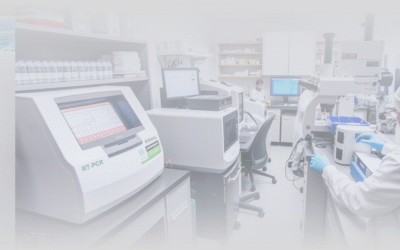Laboratory Order and Inventory Management is essential to keep research labs running smoothly. Managing a research lab not just conducting experiments but researchers also need the right materials, at the right time, in the right place in order to complete their work accurately and efficiently.
Effective lab order and inventory management is your silent partner in success which helps labs stay efficient, organized, and on budget.
Without proper order and inventory management system, a research lab could experience significant delays, errors and additional expenses related to resourcing. This can ultimately slow down the research progress.
What Exactly is Lab Inventory?
Lab inventory includes everything researchers need to perform their work:
- Chemicals & Reagents: Chemicals, acids, buffers, enzymes, antibodies.
- Consumables: Pipette tips, gloves, tubes, culture plates, filters.
- Glassware & Plasticware: Beakers, flasks, bottles, Petri dishes.
- Equipment: Centrifuge rotors, microscope bulbs, specialized tools.
- Biologicals: Cell lines, media, sera, enzymes.
Each of these items has a usage rate, cost, and often an expiry date. Some require special storage. Others are expensive or time sensitive. A well-managed inventory system ensures everything is tracked, stored correctly, and reordered on time.
A well-managed lab inventory management ensures everything is tracked and stored correctly in lab space. Furthermore, ensuring timely reordering and organizing inventory space are important aspects of inventory management.
Why Inventory and Order Management Matters
Laboratory order and inventory management system is integral part of research facility to help in monitoring up to date inventory levels and to identify when to reorder the articles before they run out.
Here are common issues that arise in poorly managed labs:
- Running out of critical reagents mid-experiment
- Duplicate purchases due to lack of visibility
- Missed expiry dates, especially on temperature-sensitive items
- Overspending on stock not currently needed
- Delays in experiments due to lost or untracked orders
When inventory is not tracked or orders are placed manually using emails, spreadsheets, or verbal requests, the research lab becomes vulnerable to inefficiencies and avoidable costs.
A proper lab order management system should solve this by bringing all steps — from order request to delivery — into one streamlined workflow.
Key Questions for Building Your System
To ensure efficient and effective lab management, ask your team:
- What is needed? List everything routinely used. Prioritize high-use, critical items.
- How often is it Used? To know the usage frequency of each items helps to maintain the stock and which article can be ordered as needed.
- What can it Cost? To maintain the balance between budget and cost of each item is important to keep an eye on project funds.
- When Does it Expire? Tracking expiration dates prevents using compromised reagents and wasting money. Expired items can have an impact on accuracy and reliability of experimental results.
- Where is article stored? Map your storage space. Can you group items logically (e.g., all PCR reagents together)? Make the space available for upcoming deliveries.
- Who has ordered? For which project was ordered? Who can take the responsibility to monitor the stock and reordering.
Best Practices for Lab Inventory and Order Management
1. Maintain Regular Stock counts
Begin with a clear picture of what is in your lab. Make a complete inventory list and keep it updated. Include:
- Item name
- Quantity
- Location
- Expiry date
- Responsible person (if needed)
This helps prevent overordering and ensures you do not run out of essential items.
👉 Tip: LabInFlow helps track your stock digitally and keeps historical records.
2. Organize Supplies Logically
Group items by category (e.g., chemicals, plastics, consumables) or by experiment type. Label storage areas and assign storage locations like Room, shelves, drawers as well different storage temperatures.
3. Track Usage and Reordering Schedules
Every lab has high turnover items. Track usage frequency and set minimum stock thresholds. Therefore, it is important to
- Monitor real-time usage
- Assign orders to projects or grants
- Automate alerts for reordering
- Prevent stockouts and missed deliveries
4. Assign Roles and Responsibilities
Lab inventory and ordering should not be left to chance. Define who is allowed to:
- Create orders
- Approve purchases
- Receive items
- Track usage
- Audit stock
5. Monitor Expiry Dates and Storage Conditions
Especially for chemicals, media, enzymes, or temperature-sensitive kits, you need:
- Proper labelling with expiry dates
- Logging of delivery and storage date
- Reminders or flags for nearing expiry
Manual tracking often fails here. A digital system can automate this process and reduce waste from expired reagents.
6. Track Budgets & Project Funds
Monitor spending against grants or institute budgets in real time to:
- Assign each order to a specific project or fund
- Track remaining balances and avoid overspending
- Align orders with available funds before purchasing
- Assign costs to specific projects for accurate reporting
- Forecast future expenses based on usage trends
7. Use Lab Order Management Software
If you are still using Excel or paper to manage orders, it is time to switch. A digital order and inventory management system saves time, prevents human error, and gives full visibility.
With best and user-friendly order management system you should get:
- A central dashboard for all lab orders
- Status updates: Pending → Approved → Delivered
- See current fund balance and remaining budget instantly
- Role-based user access
- Researchers create and submit orders
- Admins handle approvals and confirmations
- Super Admins oversee everything — budget, users, and workflows
- Automatic logs for every action taken
You can even view or download the full system overview here:
📄 Download LabInFlow Catalogue (PDF)
Final Thoughts
Research labs need order and inventory systems just as much as they need good equipment and skilled researchers. A well-run lab avoids delays, reduces waste, and gives researchers more time to focus on science.
Whether you’re running a small academic lab or managing a large institute, these best practices will help you stay organized and cost-effective.
Interested in improving how your lab works?



